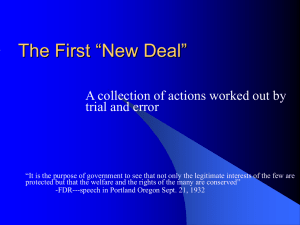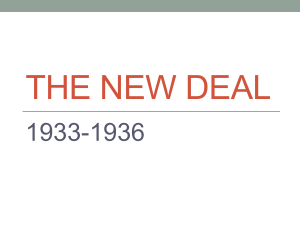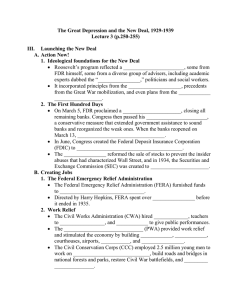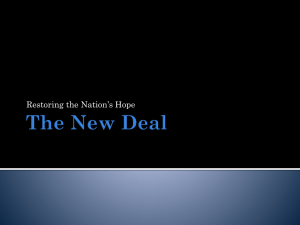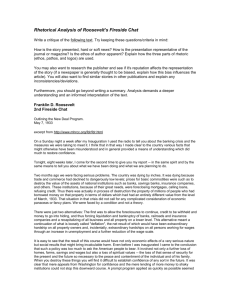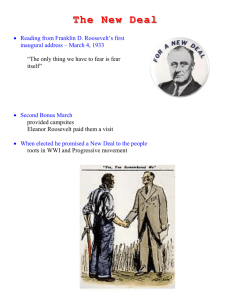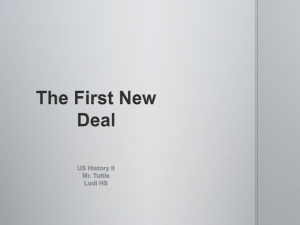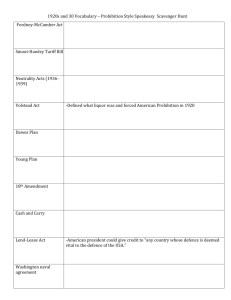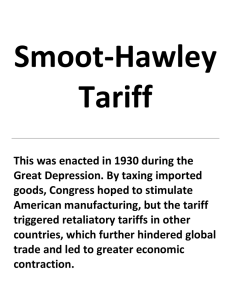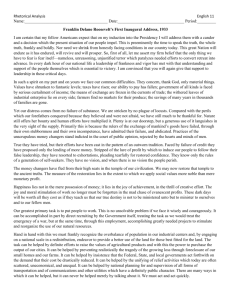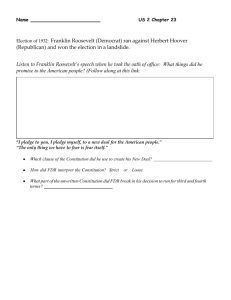New Deal.doc
advertisement
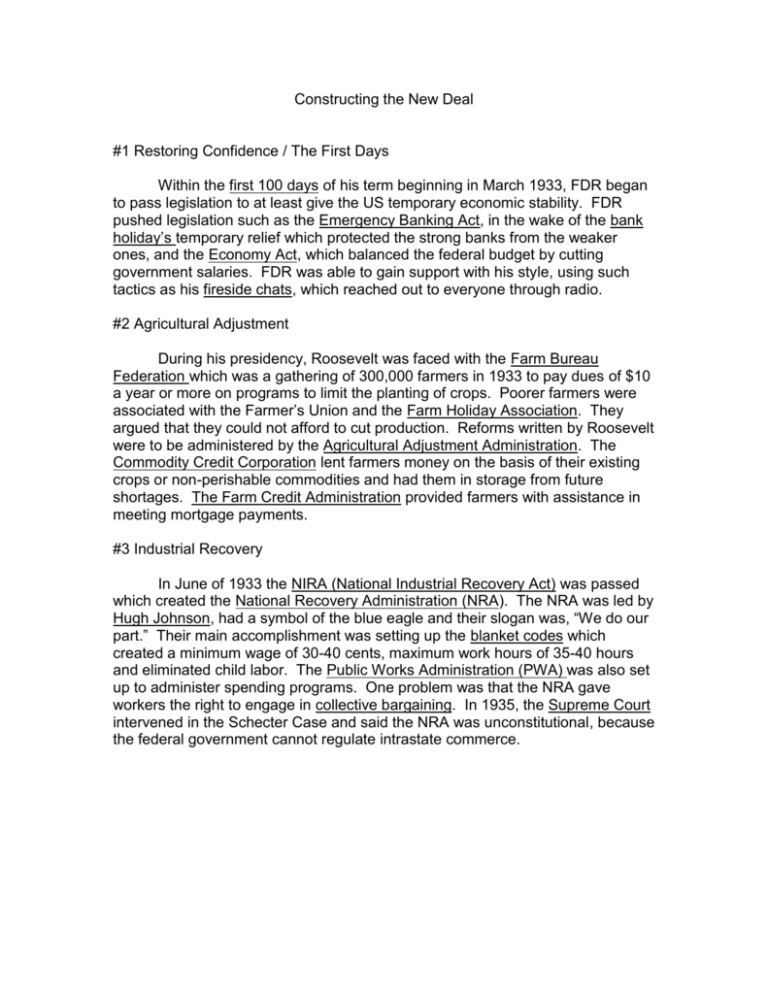
Constructing the New Deal #1 Restoring Confidence / The First Days Within the first 100 days of his term beginning in March 1933, FDR began to pass legislation to at least give the US temporary economic stability. FDR pushed legislation such as the Emergency Banking Act, in the wake of the bank holiday’s temporary relief which protected the strong banks from the weaker ones, and the Economy Act, which balanced the federal budget by cutting government salaries. FDR was able to gain support with his style, using such tactics as his fireside chats, which reached out to everyone through radio. #2 Agricultural Adjustment During his presidency, Roosevelt was faced with the Farm Bureau Federation which was a gathering of 300,000 farmers in 1933 to pay dues of $10 a year or more on programs to limit the planting of crops. Poorer farmers were associated with the Farmer’s Union and the Farm Holiday Association. They argued that they could not afford to cut production. Reforms written by Roosevelt were to be administered by the Agricultural Adjustment Administration. The Commodity Credit Corporation lent farmers money on the basis of their existing crops or non-perishable commodities and had them in storage from future shortages. The Farm Credit Administration provided farmers with assistance in meeting mortgage payments. #3 Industrial Recovery In June of 1933 the NIRA (National Industrial Recovery Act) was passed which created the National Recovery Administration (NRA). The NRA was led by Hugh Johnson, had a symbol of the blue eagle and their slogan was, “We do our part.” Their main accomplishment was setting up the blanket codes which created a minimum wage of 30-40 cents, maximum work hours of 35-40 hours and eliminated child labor. The Public Works Administration (PWA) was also set up to administer spending programs. One problem was that the NRA gave workers the right to engage in collective bargaining. In 1935, the Supreme Court intervened in the Schecter Case and said the NRA was unconstitutional, because the federal government cannot regulate intrastate commerce. # 4 An Experiment in Regional Planning The government experimented in the idea of stimulating the economy through urban development and regional planning. The Tennessee Valley Authority took what was an abandoned dam (the Muscle Shoals Project) and turned it in to a way to both develop an impoverished area and to establish a cheap public power utility (though the later aim came under fire from private utility companies). #5 Financial Reforms Roosevelt directed Henry Morgenthau Jr., head of the Farm Credit Administration to make purchases of gold along with meat. corn and oats. Congress passed the Silver Purchase Act of 1943 for the purchase of silver. The Glass-Steagall Act of June 1933 gave the government the authority to curb irresponsible speculation by banks. This established the FDIC. Congress passed the Truth in Securities Act of 1933, which required corporations to issue new securities and to register them with the Federal Trade Commission. In June 1934, Congress established the Securities and Exchange Commission to police the stock market. #6 Growth in Federal Relief The Federal Emergency Relief Act was established by FDR to give money back to the states. Henry Hopkins was head of FERA and ran it effectively. This whole program was a relief plan to try to start up the economy again. The CWA was also established to try to give people jobs. It was pumping money into the economy effectively. The CCC was established to also provide work, but for young men to work and to send money back to their families. The HOLC loaned out about $3 billion to refinance mortgages over millions and millions of households. They didn’t want to keep houses; the banks wanted the homeowners to keep homes.
